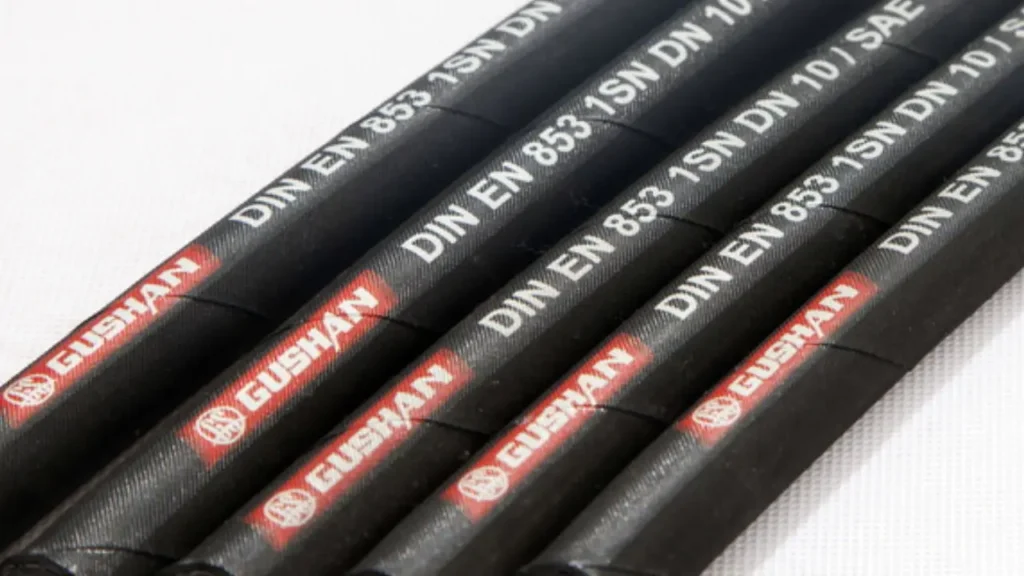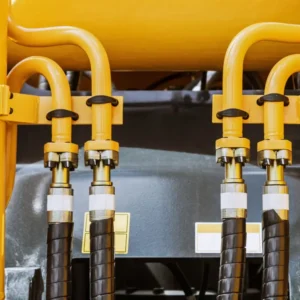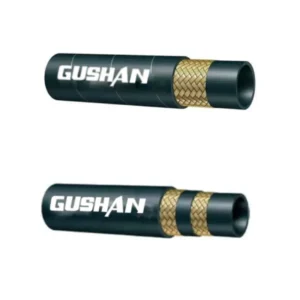Ever wondered about those cryptic lines on hydraulic hoses? They’re not just random markings; they’re a blueprint for the hose’s construction, performance, and compatibility. These lines are known as laylines.
In this blog post, we’ll delve into the world of hydraulic hose laylines. We’ll uncover what they are, how to interpret them, and why understanding them is crucial for ensuring optimal hydraulic system performance and safety.
What Is Hydraulic Hose Layline

A hydraulic hose layline is a series of markings or tags found on a hydraulic hose that provide essential information about its characteristics and performance capabilities. This information is crucial for selecting the right hose for your specific application and ensuring its safe and efficient operation.
Key information typically found on a layline includes:
- Manufacturer‘s name or logo: Identifies the company that produced the hose.
- Specification standards: Indicates the industry standards or specifications the hose adheres to, such as SAE, EN, or ISO.
- Pressure rating: Specifies the maximum working pressure the hose can withstand.
- Temperature range: Defines the operating temperature limits of the hose.
- Date of manufacture: Shows when the hose was produced.
- Identification number or code: A unique identifier for the hose.
- Usage instructions or warnings: Provides guidance on proper handling, installation, and maintenance.
Understanding and interpreting the layline information is essential for:
- Selecting the right hose: Ensuring compatibility with your hydraulic system’s pressure, temperature, and fluid type requirements.
- Safe operation: Avoiding potential hazards like hose failure or leaks by adhering to the specified pressure and temperature limits.
- Efficient maintenance: Tracking the age and condition of hoses for timely replacement.
By paying attention to the layline information, you can make informed decisions about your hydraulic hose selection and maintenance, contributing to the overall reliability and safety of your hydraulic system.
Why Hydraulic Hose Layline Is Important
Why is there a hydraulic hose layline?
A hydraulic hose layline is more than just a series of markings; it’s a vital piece of information that can significantly impact the safety, efficiency, and longevity of your hydraulic system. Here’s why:
1. Safety:
- Pressure Rating: The layline indicates the maximum pressure the hose can withstand. Exceeding this limit can lead to catastrophic failure, potentially causing injury or property damage.
- Temperature Range: Knowing the temperature limits helps prevent hose degradation and ensures optimal performance in various conditions.
2. Efficiency:
- Correct Hose Selection: The layline provides essential information for selecting the right hose for your specific application, ensuring optimal fluid flow and system performance.
- Preventive Maintenance: By understanding the hose’s age and usage conditions, you can schedule timely replacements and avoid unexpected breakdowns.
3. Cost-Effectiveness:
- Reduced Downtime: Proper hose selection and maintenance minimize the risk of failures, reducing downtime and associated costs.
- Optimized System Performance: Using the right hose ensures efficient energy transfer and prevents power loss, leading to lower operating costs.
4. Compliance and Regulatory Adherence:
- Industry Standards: The layline often indicates compliance with industry standards and regulations, ensuring safety and legal compliance.
In essence, a hydraulic hose layline is a silent guardian of your hydraulic system. By understanding and interpreting the information it provides, you can make informed decisions that can save time, money, and, most importantly, lives.
Remember: Always consult the manufacturer‘s guidelines and local regulations for specific instructions on hose selection, installation, and maintenance.
How To Read A Hydraulic Hose Layline
To read a hydraulic hose layline, you’ll need to decipher the various markings and codes imprinted on the hose. Here’s a breakdown of the key information you can find:
1. Manufacturer’s Name or Logo: This identifies the company that produced the hose.
2. Specification Standards: These indicate the industry standards or specifications the hose adheres to, such as SAE, EN, or ISO.
3. Pressure Rating: This specifies the maximum working pressure the hose can withstand. It’s crucial to ensure the hose can handle the pressure of your hydraulic system.
4. Temperature Range: This defines the operating temperature limits of the hose. It’s essential to select a hose that can withstand the temperature fluctuations in your application.
5. Date of Manufacture: This shows when the hose was produced. Knowing the age of the hose can help with maintenance planning and replacement.
6. Identification Number or Code: This is a unique identifier for the hose. It can help track and order replacement hoses.
7. Usage Instructions or Warnings: This provides guidance on proper handling, installation, and maintenance. It’s important to follow these instructions to ensure the hose’s safety and longevity.
Understanding and interpreting the layline information is essential for:
- Selecting the right hose: Ensuring compatibility with your hydraulic system’s pressure, temperature, and fluid type requirements.
- Safe operation: Avoiding potential hazards like hose failure or leaks by adhering to the specified pressure and temperature limits.
- Efficient maintenance: Tracking the age and condition of hoses for timely replacement.
By paying attention to the layline information, you can make informed decisions about your hydraulic hose selection and maintenance, contributing to the overall reliability and safety of your hydraulic system.
Conclusion
Understanding your hydraulic hose layline is crucial for ensuring the safety and efficiency of your hydraulic system. By deciphering the information encoded within the layline, you can make informed decisions about hose replacement, compatibility, and maintenance.
Ready to customize your hydraulic hose solution? Contact [Your Company Name] today to discuss your specific needs. Our experts will help you select the right hose and fittings for your application, ensuring optimal performance and longevity.
Remember, investing in quality hydraulic hoses is an investment in the reliability and productivity of your equipment.



